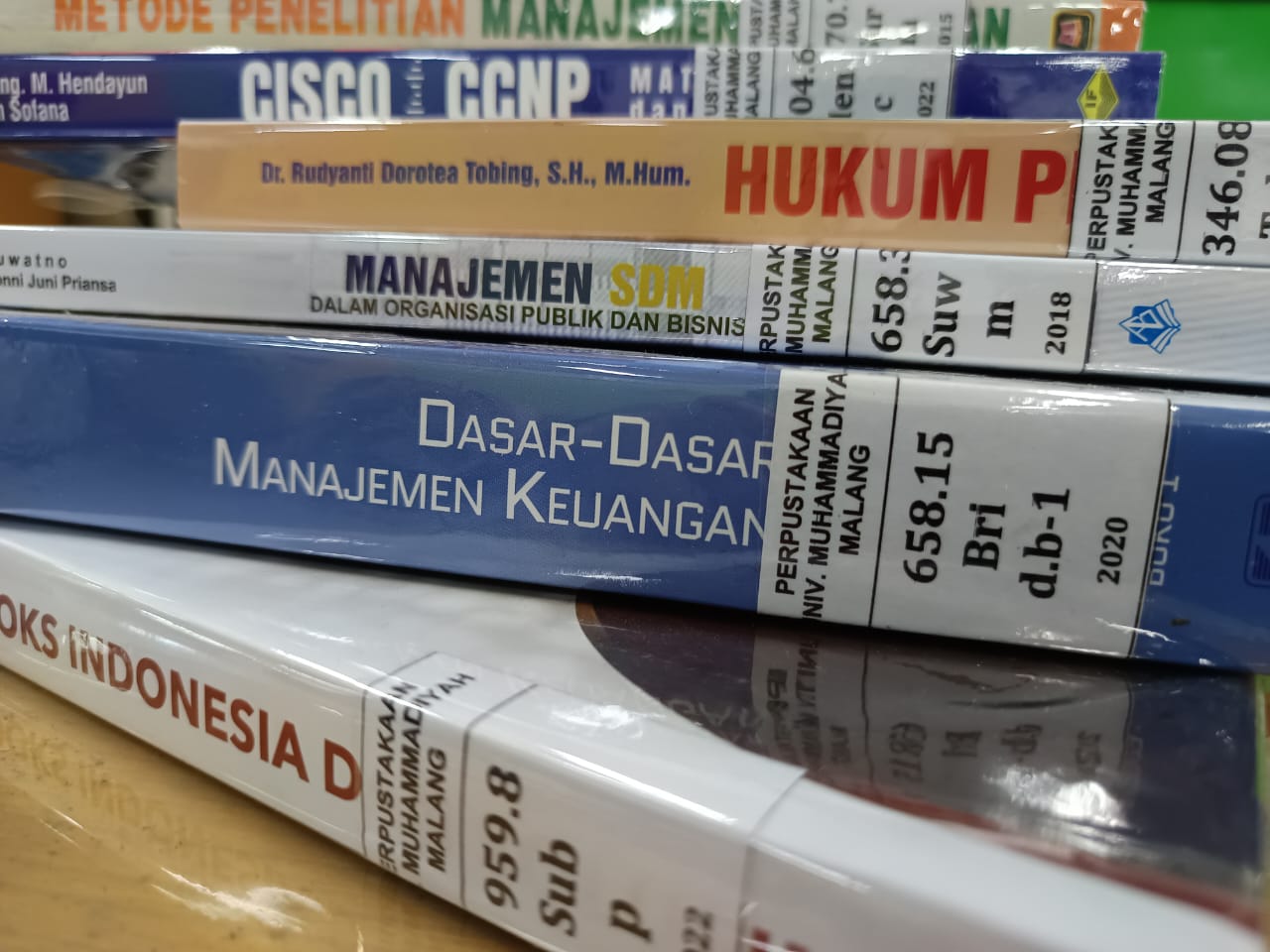 Central Library : Jl. Raya Tlogomas No 246 Malang
Central Library : Jl. Raya Tlogomas No 246 Malang infopus@umm.ac.id
infopus@umm.ac.id

Are you having trouble finding a collection of books in the library? Even though I had taken part in the Library Technical Guidance (BIMTEK) when I first entered UMM, I had also searched for OPAC (Online Public Access Catalog) but I was still having trouble!???. The library will provide information to friends on how to find print collections which can reduce your confusion...
The arrangement of UMM library's print collections has been adjusted to international standards using the DDC (Decimal Dewey Classification) system. The DDC collection grouping (classes) was designed by library pioneer Melvil Dewey in 1876. This system has a dynamic structure for organizing a library collection, to date the 24th revised edition has been published. This DDC system uses decimal notation knowledge into ten main classes, 100 divisions and 1000 parts. The following are the main classes of DDC:
000 General (Generalities = research, computer science, journalism, etc.)
100 Philosophies (Philosophy & Psychology, ethics, etc.)
200 Religions (Religions)
300 Social Sciences (Social Sciences = politics, economics, law, administration, education, etc.)
400 Languages (Languages)
500 Natural Sciences & Mathematics (Natural Science & Mathematics)
600 Technology - Applied Sciences ( Technology - Applied sciences )
700 Arts ( Arts )
800 Rhetorical literature (Literature & Rhethoric)
900 Geography & History (Geography & History)
The numbers above are large classes or main classes which are grouped based on the same subject, which will make it easier for librarians and library staff in arranging or aligning collections on the shelves. Meanwhile, for users (currently called library users) it makes it easier to search or search for collections on the shelves. The search for large classes is still less specific because in dividing numbers in the main class it will still be divided into scientific sub-subs in each field (note: the main class will be further divided into 10 divisions, each division will also be further divided into sub-divisions, etc.)
Specifications for each main class number, for example class number 000 (general works there are class numbers 00.4 research methodology), 003-006 computer science, 070 journalism and continuing until the end of main class 900.
As an example it can be described as follows:
500 – Science (pure science)
510 – Mathematics
520 – Astronomy
530 – Physics
540 – Chemistry
550 – Earth Sciences and Geology
560 – Fossils & Prehistoric Life
570 – Life sciences; biology
580 – Plants (botany)
590 – Animals (zoology)
Class 510 will be further divided into divisions, as follows:
510 – Mathematics
511- General principles of Mathematics
512 – Algebra & number theory
513 – Arithmetic
514 – Topology
515 – Analysis (mathematics)
516 – Geometry
517 –
518 – Numerical analysis
519 – Probability & applied mathematics
-etc...
The example above also applies to other Main Class Numbers
(source: DDC 22nd edition – special Indonesian adaptation/ Sulistyo – Basuki, 2006)
Alignment of Collections on Shelves
Arrangement of collections on the shelves is sorted based on DDC from smallest to largest number, based on the first 3 letters of the author and the first letter of the book title. And so that you pay attention, the arrangement of the book collections on the shelves is not classified according to department or faculty, even though there are several themes/subjects in the collection that are the same as the name of the department or study program (for example: mathematics subject = mathematics department), so that users can search using mathematics keywords.
Example of the order of alignment of collections on the shelves:
510 511 511 512 512.4 514 519 519
Ari Fad Zid Mir Alf Had Mir Sus
S m d b k r c m
Collection Browsing
Meanwhile, for continuing collection searches at the collection search stage, it is recommended to come directly to the OPAC (Online Public Access Catalog) which can be accessed in the library via otomasi.lib.umm.ac.id, outside the campus it can be accessed via the library website https:/ /lib.umm.ac.id or directly at https://laser.umm.ac.id.Write one keyword from the title, author, or subject, then inform then information about the collection will appear starting from class number, where the collection is located (Central Library, Campus II Library, Postgraduate Library, Mosque Library or at the respective Faculty – respectively), results of the search will appear with the information Good condition, lost or borrowed. Users should pay attention to all the information displayed OPAC to make it easier, faster, and more precise to get to the collection point. Knowledge about the arrangement and classification of collections for library users, from being general knowledge, will also make it easier to search for collections. Hopefully this little information can help users, thank you.ation about the collection will appear starting from class number, where the collection is located (Central Library, Campus II Library, Postgraduate Library, Mosque Library or at the respective Faculty – respectively), then the results of the search will appear with the information Good condition, lost or borrowed. users should pay attention to all the information by OPAC to make it easier, faster, and more precise to get to the collection point. Knowledge about the arrangement and classification of collections for library users, apart from being general knowledge, it will also make it easier to search for collections. Hopefully this little information can help users, thank you.